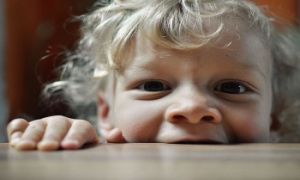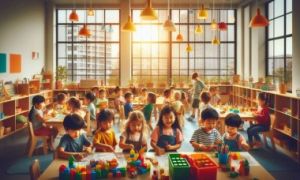Learning journals are a fantastic tool for documenting a child’s development, learning experiences, and progress over time. They provide a personalized and holistic view of a child's growth and are beneficial for educators, parents, and even children themselves. The following article provides information on What Are Learning Journals, Benefits of Learning Journals, Observations and Documentation In Learning Journals, Example of A Learning Journal and more.
What Are Learning Journals?
Learning journals are individual portfolios or collections of documentation that capture:
- A child’s achievements, interests, and skills.
- Observations, photos, artwork, and other evidence of learning.
- Reflections and comments from educators, families, and even the child.
Benefits of Learning Journals
Educators:
- Helps track progress and identify areas for development.
- Assists in planning tailored learning experiences.
- Offers evidence to meet Quality Area 1 (Educational Program and Practice) and regulatory requirements.
Families:
- Provides insights into their child’s daily activities and learning journey.
- Strengthens partnerships between home and the education setting.
Children:
- Builds self-esteem as they see their accomplishments.
- Encourages reflection and goal-setting from an early age.
- Strategies for Creating Learning Journals
Observations and Documentation In Learning Journals
- Use observation templates to record significant moments.
- Include detailed anecdotes and relate them to learning outcomes (e.g., EYLF outcomes).
Child-Led Contributions:
- Let children add drawings, photos, or notes about their favorite activities.
- Involve them in choosing what they’d like to document.
Visual Appeal:
- Use creative layouts with photos, captions, and colorful borders to make journals engaging.
- Add sections for each developmental domain (e.g., physical, cognitive, social).
Integration with Families:
- Share journals periodically with families and invite their input or feedback.
- Collaborate on documenting milestones or cultural activities.
Reflection and Analysis:
- Include educator reflections on what the child learned and next steps for fostering growth.
Example of A Learning Journal
Here’s a simple example format of a learning journey document you can adapt for your childcare setting. This structure reflects observations, reflections, and planning in alignment with the EYLF and Quality Areas:
Here’s a sample learning journey entry for Louis:
Learning Journey of Louis
Date: 10/06/2025
Educator: Lorina
1. Observation
Setting: Outdoor play area—sand and water exploration
What Happened: Louis enthusiastically scooped sand into a bucket and experimented by pouring water over it. He observed how the sand changed texture and exclaimed, “It’s like magic!” He engaged in conversation with peers, sharing ideas about building structures.
Learning Outcomes (EYLF):
- Outcome 1: Children have a strong sense of identity—Louis expressed curiosity and independence in exploring materials.
- Outcome 2: Children are connected with and contribute to their world—he engaged in collaborative play, discussing ideas with peers.
- Outcome 4: Children are confident and involved learners—Louis experimented with cause and effect by adding water to dry sand.
2. Reflection
Educator’s Thoughts:
Louis demonstrated problem-solving skills as he observed and adjusted his approach to building with wet sand. His excitement and engagement showed confidence in experimenting with new textures. He also showed social awareness by including peers in his discoveries.
3. Next Steps
Planned Experiences:
- Provide different materials, such as clay or mud for further sensory exploration.
- Introduce tools like measuring cups or funnels to extend learning about volume and flow.
- Encourage teamwork by organizing a group challenge to build a sandcastle.
4. Child’s Contributions
"Look! The sand is soft now!" – Louis
"Let’s make a big castle together!" – Louis
5. Family Feedback (Optional)
Families are encouraged to share observations or experiences related to Louis’s interest in sensory play.
6. Photos or Evidence
Attach relevant photos or artwork showing Louis engaged in the activity.
Further Reading
Learning Stories In Childcare
Practical Examples Of The Planning Cycle In Action
Guidelines For Documenting In Early Childhood Services
How To Include Follow Ups Into The EYLF Program



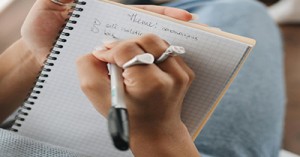
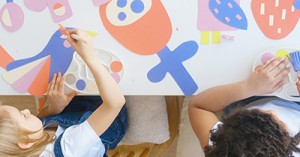
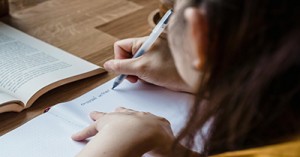

 Here is the list of the EYLF Learning Outcomes that you can use as a guide or reference for your documentation and planning. The EYLF
Here is the list of the EYLF Learning Outcomes that you can use as a guide or reference for your documentation and planning. The EYLF The EYLF is a guide which consists of Principles, Practices and 5 main Learning Outcomes along with each of their sub outcomes, based on identity,
The EYLF is a guide which consists of Principles, Practices and 5 main Learning Outcomes along with each of their sub outcomes, based on identity, This is a guide on How to Write a Learning Story. It provides information on What Is A Learning Story, Writing A Learning Story, Sample
This is a guide on How to Write a Learning Story. It provides information on What Is A Learning Story, Writing A Learning Story, Sample One of the most important types of documentation methods that educators needs to be familiar with are “observations”. Observations are crucial for all early childhood
One of the most important types of documentation methods that educators needs to be familiar with are “observations”. Observations are crucial for all early childhood To support children achieve learning outcomes from the EYLF Framework, the following list gives educators examples of how to promote children's learning in each individual
To support children achieve learning outcomes from the EYLF Framework, the following list gives educators examples of how to promote children's learning in each individual Reflective practice is learning from everyday situations and issues and concerns that arise which form part of our daily routine while working in an early
Reflective practice is learning from everyday situations and issues and concerns that arise which form part of our daily routine while working in an early Within Australia, Programming and Planning is reflected and supported by the Early Years Learning Framework. Educators within early childhood settings, use the EYLF to guide
Within Australia, Programming and Planning is reflected and supported by the Early Years Learning Framework. Educators within early childhood settings, use the EYLF to guide When observing children, it's important that we use a range of different observation methods from running records, learning stories to photographs and work samples. Using
When observing children, it's important that we use a range of different observation methods from running records, learning stories to photographs and work samples. Using This is a guide for educators on what to observe under each sub learning outcome from the EYLF Framework, when a child is engaged in
This is a guide for educators on what to observe under each sub learning outcome from the EYLF Framework, when a child is engaged in The Early Years Learning Framework describes the curriculum as “all the interactions, experiences, activities, routines and events, planned and unplanned, that occur in an environment
The Early Years Learning Framework describes the curriculum as “all the interactions, experiences, activities, routines and events, planned and unplanned, that occur in an environment
